La Carta del Rischio come strumento di gestione conservativa dei centri storici
Abstract
La questione dei centri storici è un tema che riguarda la conservazione fisica e la gestione socio-economica. La conservazione fisica degli edifici storici comuni necessita di strumenti speciali per verificare la vulnerabilità e per indirizzare gli interventi su di essi. Lo sviluppo della digitalizzazione offre nuove e interessanti possibilità per perseguire questo obiettivo. Il saggio fornisce un panorama sintetico dei Sistemi Informativi Geografici attualmente disponibili per descrivere il territorio in Italia, a partire dai geoportali istituzionali. Essi illustrano la pianificazione regionale e altri aspetti del territorio, tra cui a volte reintra la geolocalizzazione dei centri storici, senza alcuna descrizione delle loro caratteristiche e del loro stato di conservazione. La Mappa del Rischio è un GIS del MiBACT (Ministero per i beni e le attività culturali e del turismo) dedicato alla vulnerabilità e al rischio di perdita della valutazione dei beni culturali. L’implementazione di questo sistema per un nuovo modo di gestire i centri storici è stato studiato da un gruppo di ricerca della Sapienza insieme a esperti dell'Istituto Centrale per il Restauro e dell'Istituto Centrale del Catalogo e della Documentazione del MiBACT. Ciò consente una rappresentazione dettagliata della vulnerabilità del centro storico attraverso sei livelli di descrizione, dalla scala urbana a quella della facciata dell'edificio. Le caratteristiche dei centri storici del Lazio ci hanno aiutato a definire cinque diverse categorie di insediamenti a rischio o in condizione di abbandono. Per ognuna di esse si è analizzato il possibile utilizzo della Mappa dei Rischi, facendo riferimento a diversi modelli di schedulazione esistenti e facendo ipotesi di nuovo sviluppo specifico del sistema per il controllo della protezione dei siti abbandonati.
The Risk Map as a tool for conservation managing of historical centres
The issue of the historical centres is a matter of physical conservation and socio-economic managing. Physical conservation of common historical buildings needs special tools to check the vulnerability and to address intervention on them. The development of digitalization gives new and interesting possibilities to pursue this aim. The essay gives a synthetic panorama of the Geographic Information Systems that are currently available to describe the territory in Italy, starting from the institutional geoportals. These illustrate the regional urban planning and other aspects of the territory, among them sometime there are the geo-localisation of the historical centres, without no descriptions of their features and their state of conservation. The Risk Map is a GIS of the MiBACT (Ministry for cultural heritage and activities and tourism) dedicated to vulnerability and risk of loss of cultural heritage assessment. A development of this system for a new way of managing the historical centres has been studied by a research group of Sapienza with experts of the Istituto Centrale per il Restauro and Istituto Centrale del Catalogo e della Documentazione of MiBACT. This allows a detailed representation of the historical centre vulnerability through six levels of description, from the urban scale to that of the building façade. The features of the historical centres in Latium have helped us to define five different categories of settlements that are at risk or in condition of abandon. For each of them we have analysed the possible use of the Risk Map, referring to different existing scheduling models and making a hypothesis for new special development of the system to check the protection of abandoned sites.
Parole chiave
Full Text
PDFDOI: https://doi.org/10.14633/AHR282
Refback
- Non ci sono refbacks, per ora.
Copyright (c) 2020 Donatella Fiorani; Carlo Cacace

This work is licensed under a Creative Commons Attribution-NonCommercial 4.0 International License.
........................................................................................................................................................................................................................................................................................................................................................
ArcHistoR è una rivista open access e peer reviewed (double blind), di Storia dell’architettura e Restauro, pubblicata dall’Università Mediterranea di Reggio Calabria. La rivista ha cadenza semestrale. È una rivista di Classe A (ANVUR) per l’Area 08 - Ingegneria civile ed Architettura, settori C1, D1, E1, E2, F1.
Comitato scientifico internazionale
Maria Dolores Antigüedad del Castillo-Olivares (Universidad Nacional de Educación a Distancia de España), Monica Butzek (Kunsthistorisches Institut in Florenz), Jean-François Cabestan (Université Paris 1 - Panthéon Sorbonne), Alicia Cámara Muñoz (Universidad Nacional de Educación a Distancia de España), David Friedman (Massachussets Institute of Technology), Alexandre Gady (Université Paris-IV-Sorbonne), Jörg Garms (Universität Wien), Miles Glenndinning (Scottish Centre for Conservation Studies, University of Edinburgh), Mark Wilson Jones (University of Bath), Loughlin Kealy (University College Dublin), Paulo Lourenço (Department of Civil Engineering, University of Minho), David Marshall (University of Melbourne), Werner Oechslin (ETH, Zurich, Stiftung Bibliothek Werner Oechslin, Einsiedeln), José Luis Sancho (Dirección de Conservación de Bienes Histórico-Artísticos, Palacio Real, Madrid), Dmitrij O. Švidkovskij (Moscow Architectural Institute, MARCHI)
Comitato direttivo
Tommaso Manfredi (direttore responsabile), Giuseppina Scamardì (direttore editoriale), Antonello Alici, Salvatore Di Liello, Fabrizio Di Marco, Paolo Faccio, Mariacristina Giambruno, Bruno Mussari, Annunziata Maria Oteri, Francesca Passalacqua, Edoardo Piccoli, Renata Prescia, Nino Sulfaro, Fabio Todesco, Guglielmo Villa
........................................................................................................................................................................................................................................................................................................................................................
Laboratorio CROSS. Storia dell'architettura e Restauro

ISSN 2384-8898

This work is licensed under a Creative Commons Attribution-NonCommercial 2.0 Generic License.

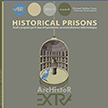
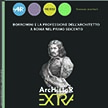
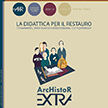

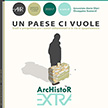
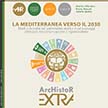
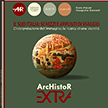
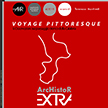
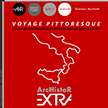
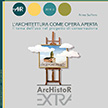
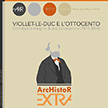

_2.jpg)



